Hardware
Lian Li TU150 MINI-ITX Case Review
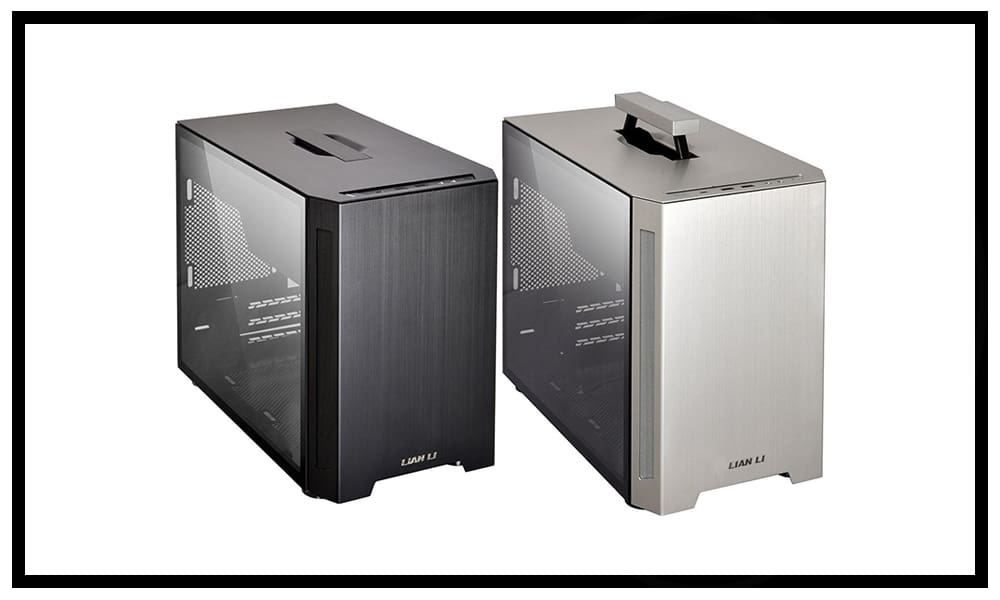
Introduction
With ever-shrinking hardware, small chassis have been gaining popularity with PC builders over the past few years. Not only do mini ITX cases take up a minimal amount of room on your desk, they are also highly portable for adjusting your workspace or bringing to LAN parties. Lian Li’s newest addition to small form factor cases is the TU150. The TU150 features a tool-less removable panel, a brushed aluminum finish, a retractable handle, and shaded tempered glass side panel. The chassis isn’t the only thing that is small about the TU150, as it also has a very affordable MSRP of $109.99.
We would like to thanks Lian Li for sending us the TU150 to review.
Lian Li’s Take on the TU150
Features & Specifications
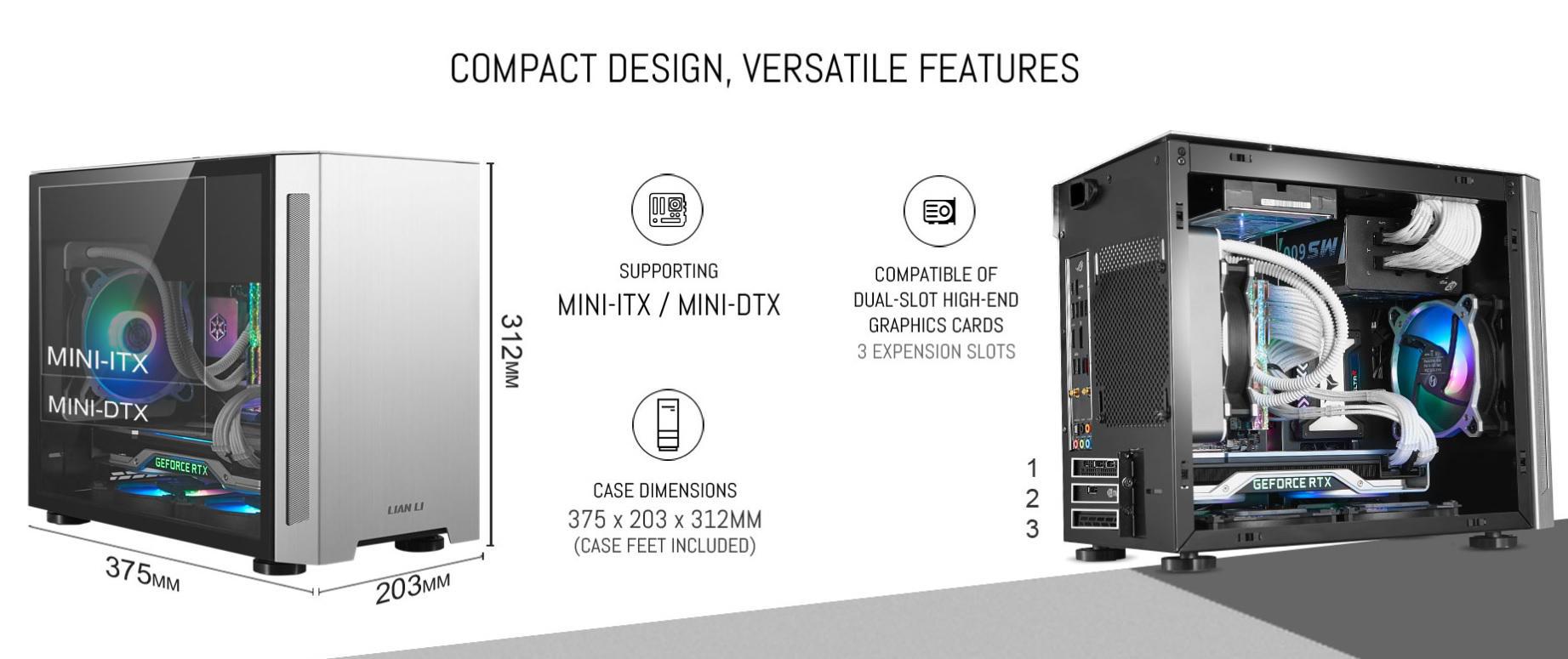
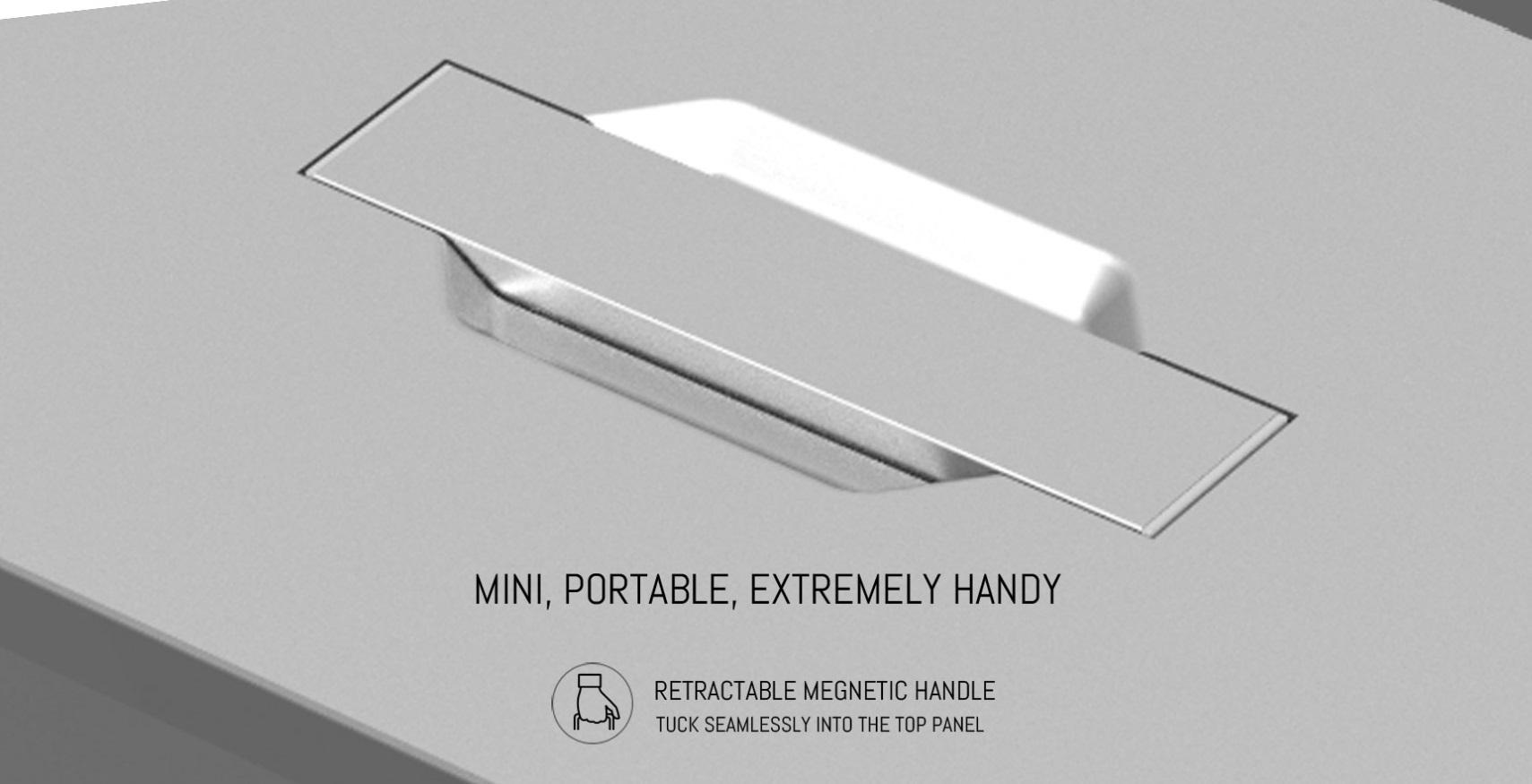
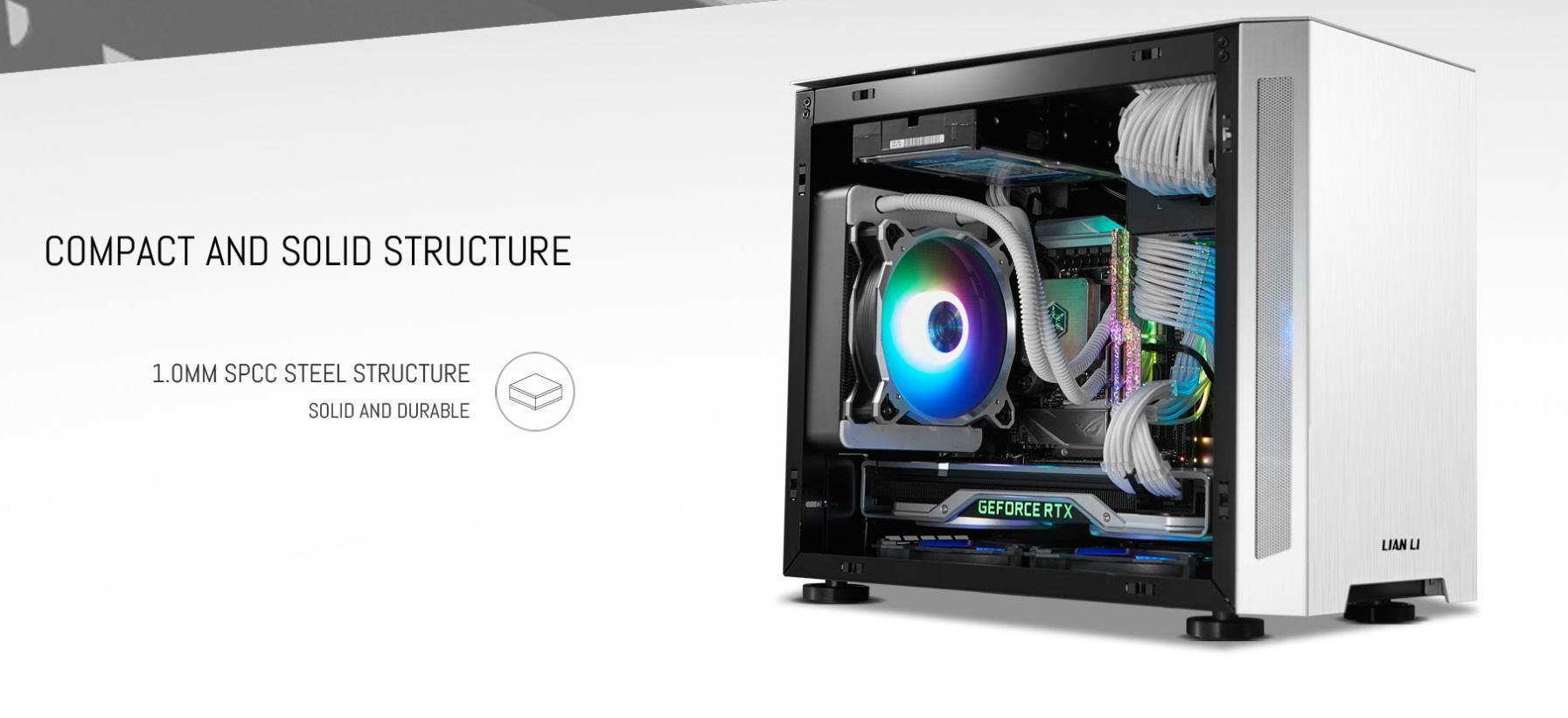
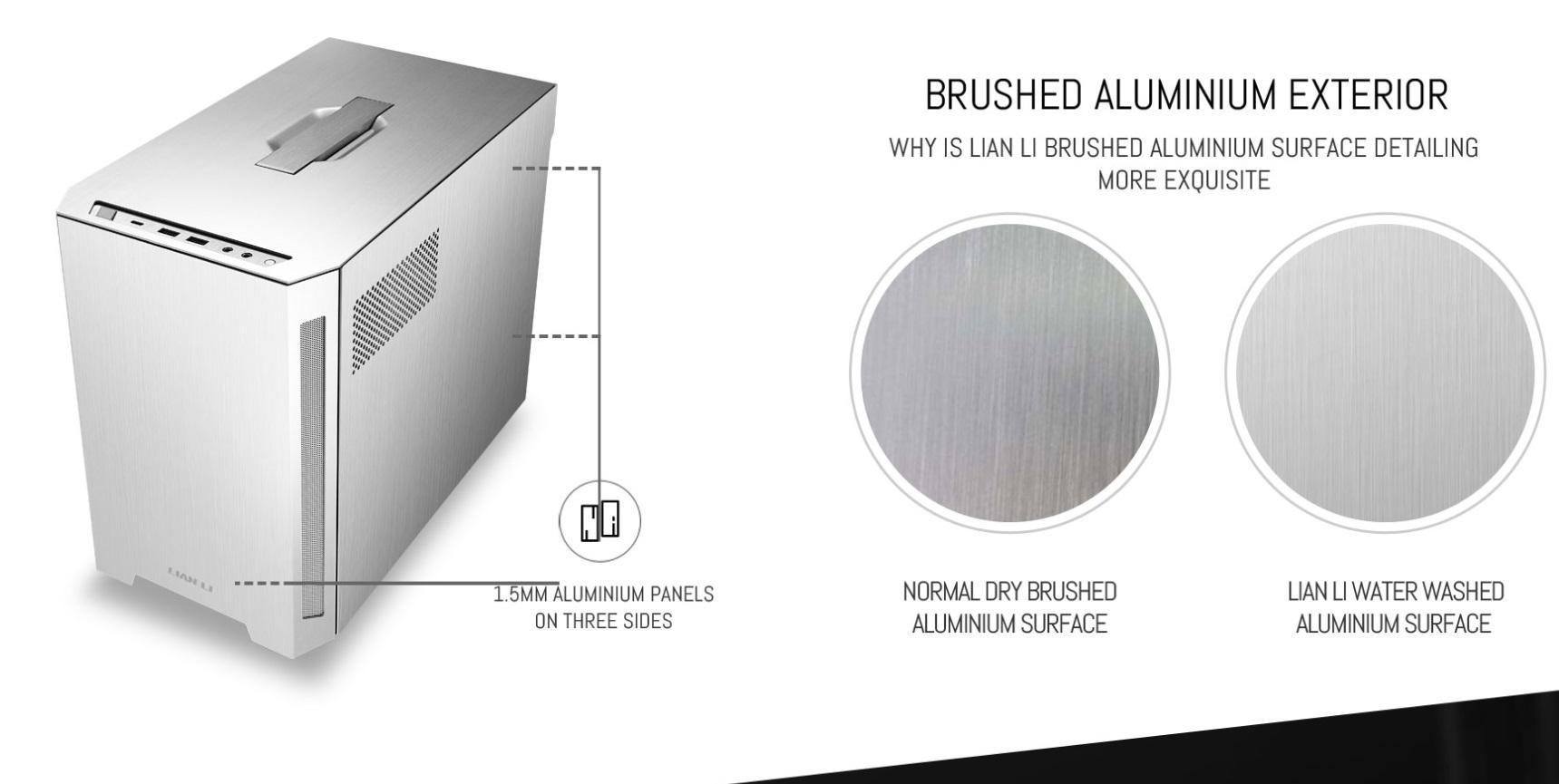
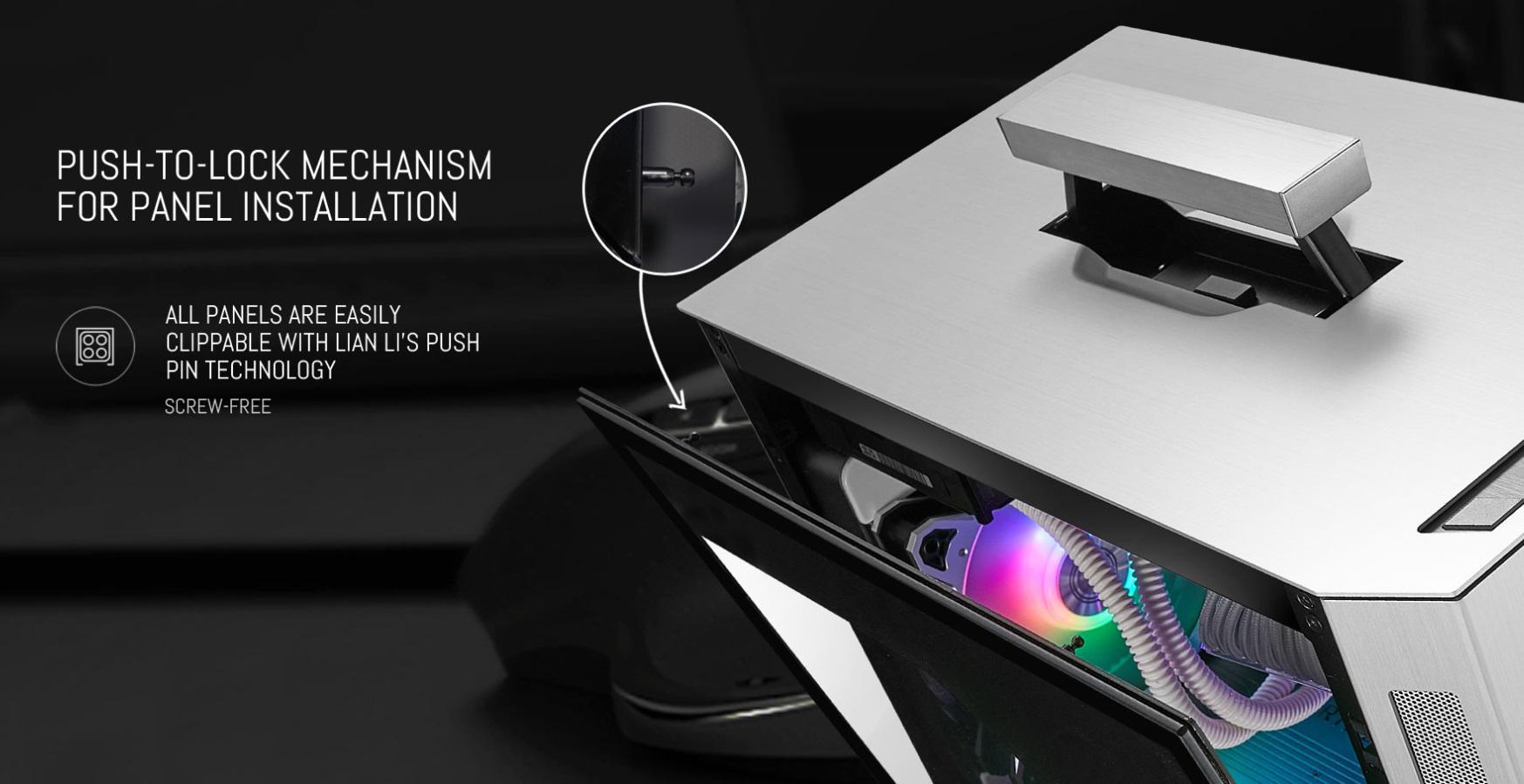
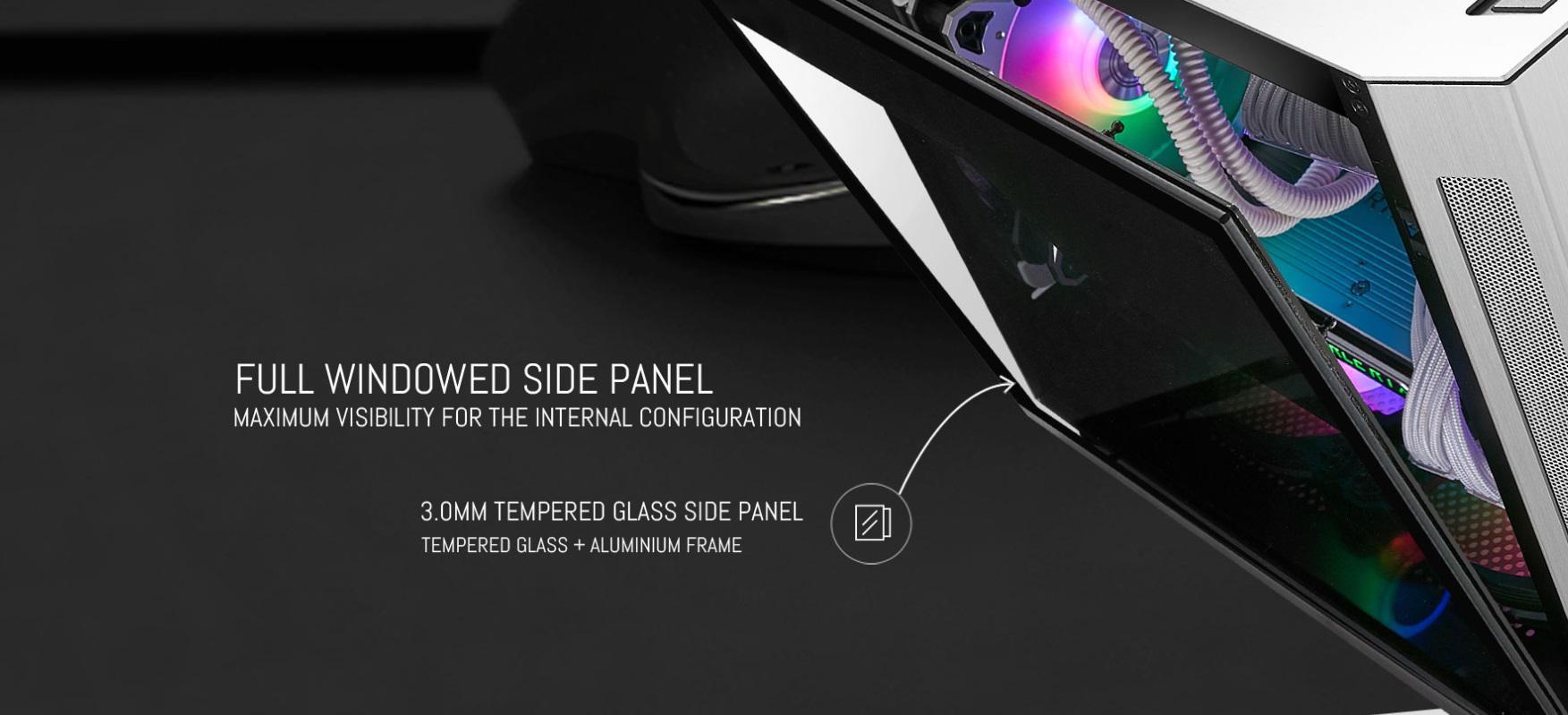
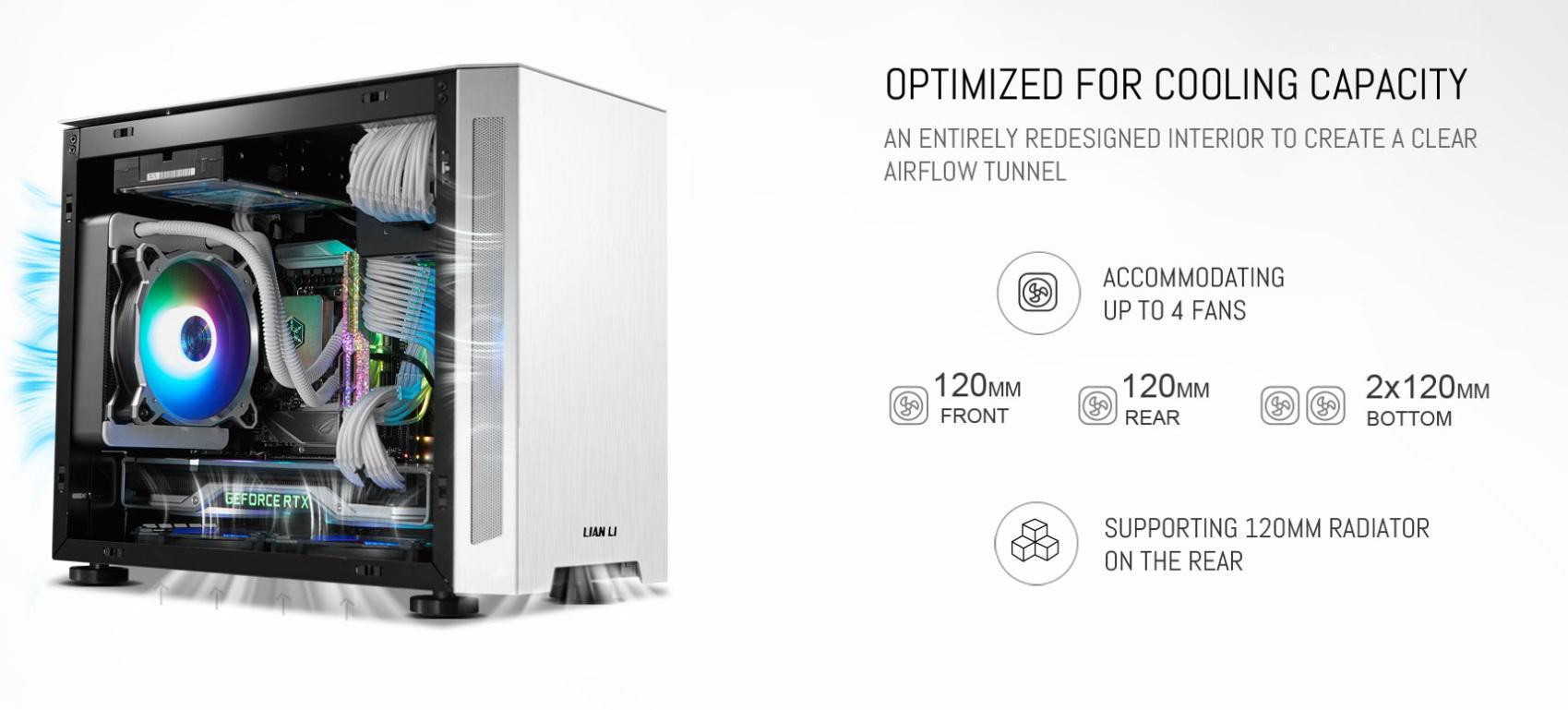

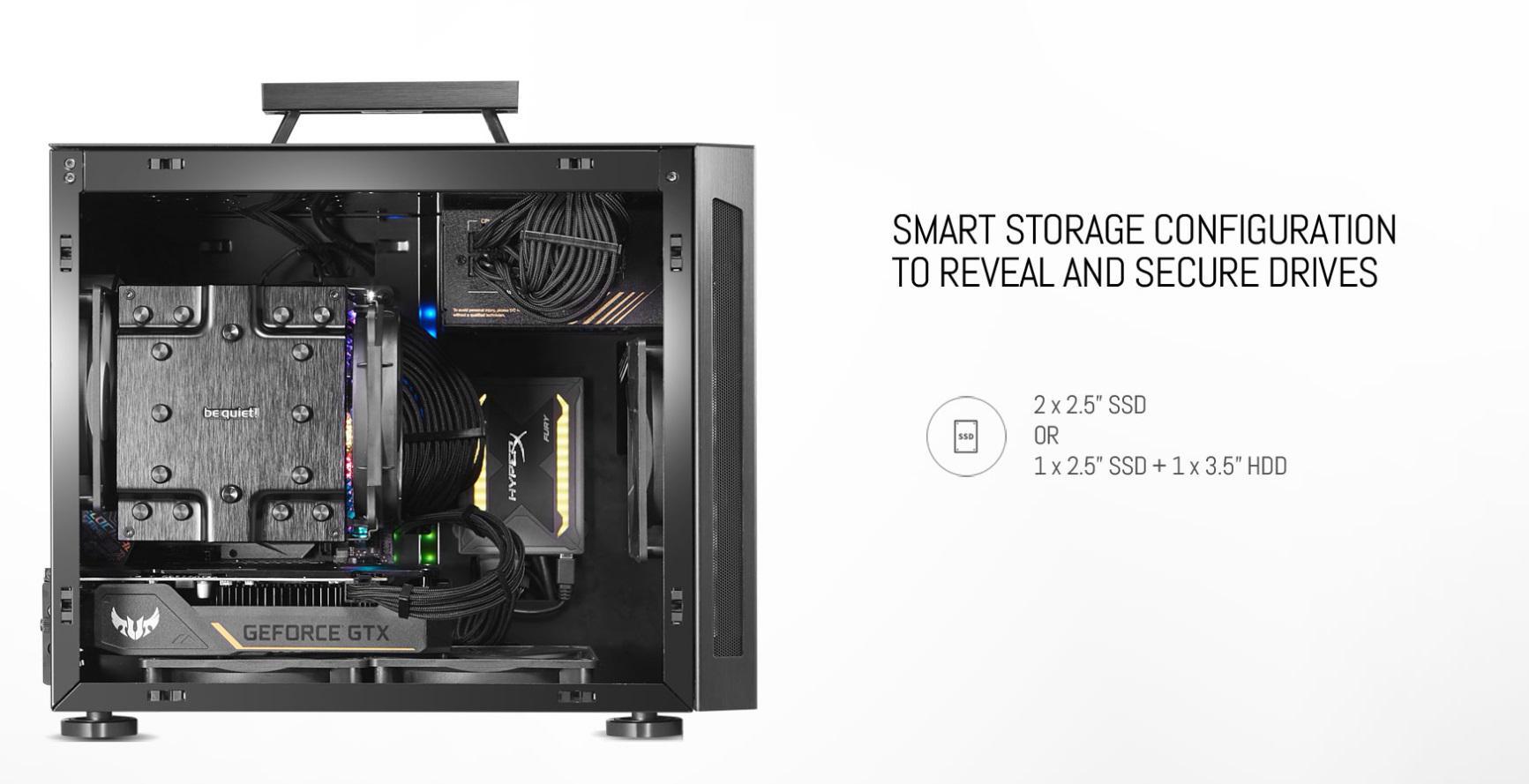
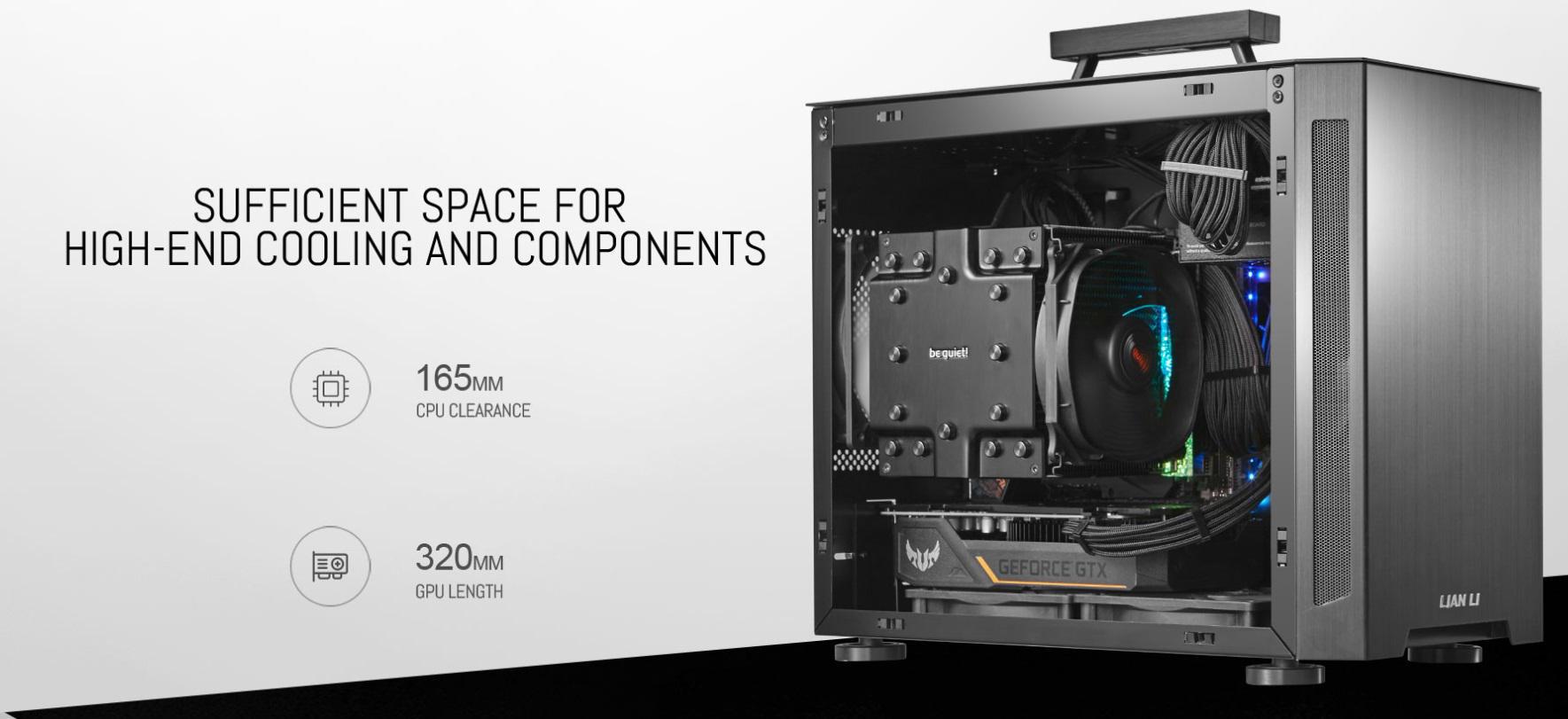
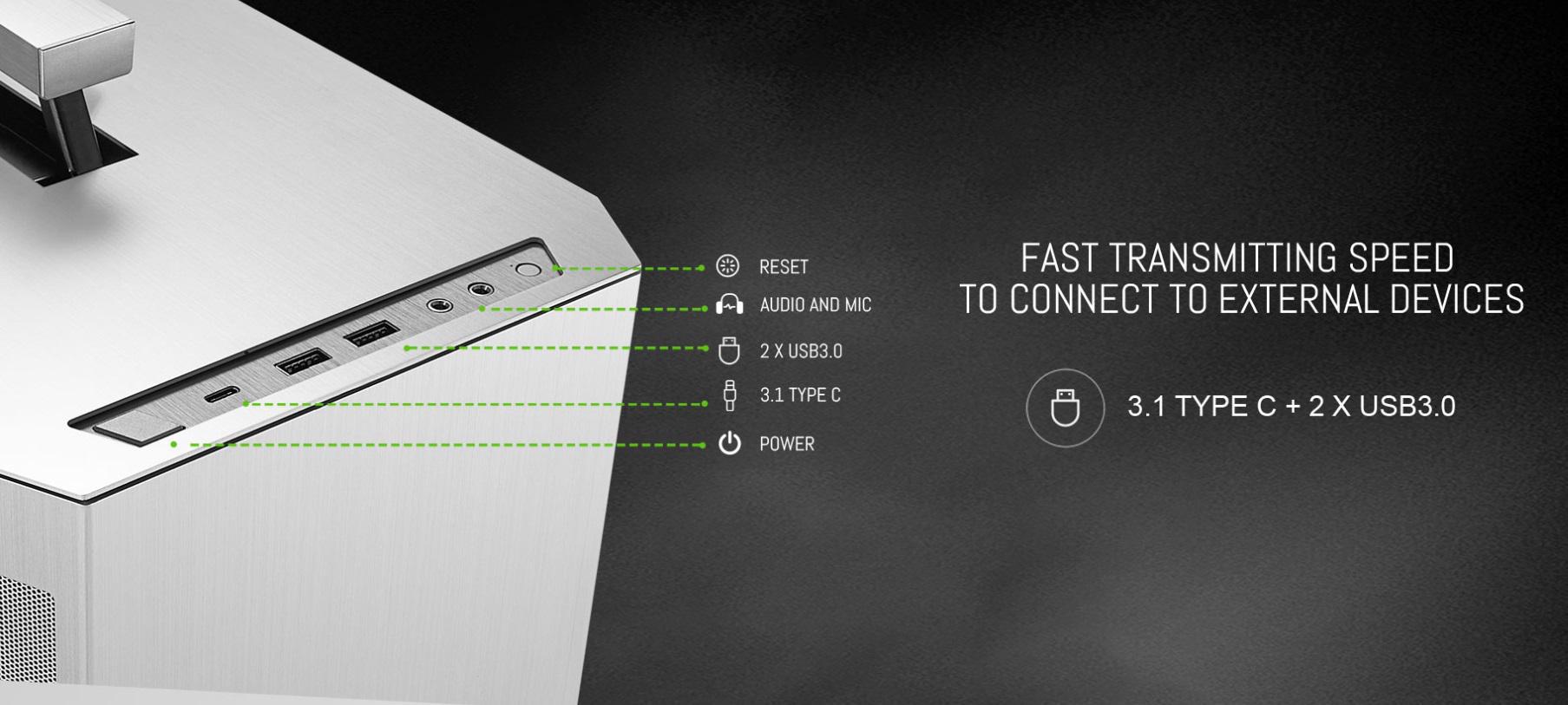
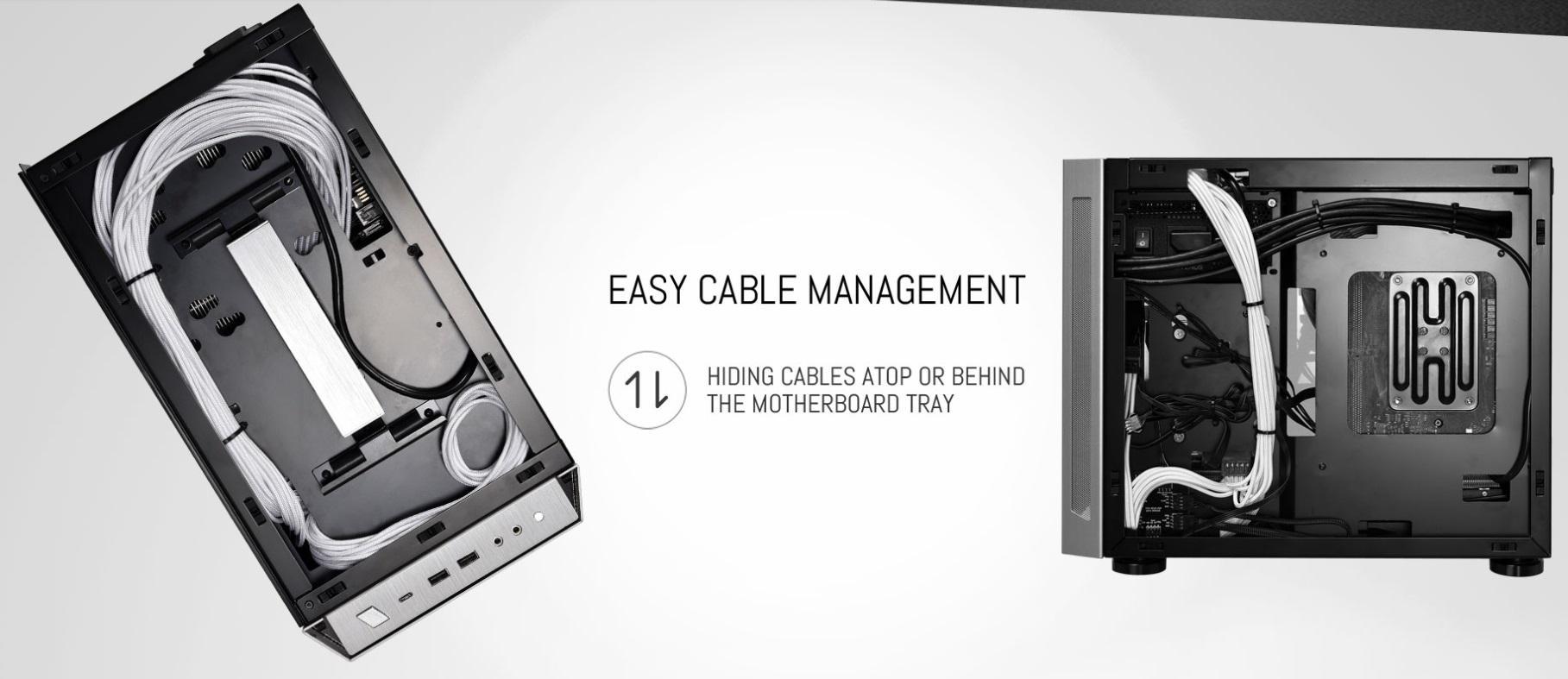

Technical Specifications:
| MODEL | LIAN LI TU150 |
| DIMENSIONS | (D) 375 X (W) 203 X (H) 312 MM |
| MOTHERBOARD | ITX/DTX |
| PSU | SFX/SFX-L |
| COLOR | BLACK/SILVER |
| MATERIAL | 1.5MM ALUMINUM EXTERIOR (TOP/FRONT/RIGHT SIDE PANEL) |
| 1.0MM SPCC INTERIOR | |
| 3.0MM TEMPERED GLASS LEFT SIDE PANEL | |
| OPTIONAL FAN SPOT | 1 X 120MM (FRONT) + 1 X 120MM (REAR) + 2 X 120MM (BASE) |
| RADIATOR | 1 X 120MM (REAR) |
| GPU LENGTH | 320MM |
| CPU CLEARANCE | 165MM |
| DRIVES | 2 X 2.5” SSD OR 1 X 2.5” SSD + 1 X 3.5” HDD |
| EXPANSION SLOTS | 3 |
| I/O PORTS | 2 X USB 3.0, 1 X USB 3.1 TYPE C, 1 X HD AUDIO |
Packaging & Unboxing
Lian Li’s TU150 arrives in a small black and brown box with both the front and back showcase a wireframed illustration of the case. The first drawing features the outside of the case with the handle recessed on the top. The other wireframe gives you a look of the TU150’s internal layout and is ready for transport with the handle in its upright position.
Turn the box to its side, and we see various TU150 SKU’s with ours being the Black TU150WX.
Removing the TU150 from its box we see it packed with your standard protective foam pieces as well as wrapped in a plastic bag.
After removing all of the packaging material from the TU150, all that is left before we build is peeling off the plastic from the tempered glass side panel.
Also stored away in the box is a small accessory kit of mounting hardware as well as a TU150 user guide. The accessory kit includes:
- 8 x Motherboard screws
- 12 x Anti-vibration rings for SSD/HHD mount
- 4 x PSU mounting screws
- 8 x SSD screws
- 4 x HDD screws
- 2 x Thumbscrews
A Closer Look: Exterior
Once the TU150 was all unpacked, the first thing that caught our eye was its beautiful brushed aluminum chassis. The chassis itself is completely black with the exception of a little accent of silver with the LIAN LI branding on the lower part of the front panel. The front panel maintains the Tu150’s clean look with black brushed aluminum and also contains a meshed vent on each side for airflow. Taking a look at the tempered glass side panel, it features a ½” inch black border on all sides with additional silk-screening at the top to help hide the PSU/cables.
When you turn the case to its other side, there is a brushed aluminum panel that has some ventilation in the upper left corner for the PSU. You may notice that this ventilation is smaller than your traditional PSU cut out and that’s because the TU150 only supports smaller form factor PSU’s such as the SFX.
Looking to the back of the TU150, you have your standard I/O cutout, 3 expansion slots, and mounting points for a 120mm fan/radiator. Lian Li h has opted to relocate the PSU to the interior of the case and they have included a PSU in the upper left corner. I do wish they would have also included a PSU switch so that you can easily turn off power to the system without needing to access the PSU inside the case.
Moving to the top of the case, the brush aluminum look is continued and toward the front of the case is the TU150’s I/O. In the center of the panel is an extremely solid carrying handle that can support a system up to 15 KG. Out of the cases I have reviewed with handles, this one is by far the best and would have 0 issues using its handle to lug around my rig.
Taking a closer look at the I/O, the TU150 includes a power button, USB Type-C port, 2 x USB 3.0 ports, 3.5mm microphone/audio jacks, and a reset button.
Popping off the front panel reveals a single filtered mounting point for a 120mm intake fan that can be installed on the inside of the case.
Taking a look at the bottom of the case, the TU150 has four rubberized feet with one being placed in each corner. It also has some additional mounting points for two more 120mm fans or offers some ventilation for your GPU.
A Closer Look: Interior
The interior of the TU150 has a black gloss finish with a motherboard tray that supports both MITX and mDTX motherboards. The TU150 has many cable-routing options with ample cutouts surrounding the motherboard tray as well as on the roof of the chassis. Toward the front of the case, we have an SFX PSU mount at the top with a 2.5” SSD mount below it.
The TU150 employs tool-less panels on both sides. The top and front of the case are easily popped off by gently pulling on them. Putting them back on is just as easy. All you have to do is line up the poles with the securing mechanism on the case and push them in.
At the front of the case, is a single mount point for a 120mm intake fan.
Looking to the roof, Lian Li has included mounting options for either a 2.5” SSD or a 3.5” HDD. There are also various cable cutouts to run/hide cables in the top of the case.
By popping off the top panel of the case, a hidden compartment for running or hiding your cables is uncovered. We personally think that this is a great design because in most mITX cases, hiding cables is extremely difficult.
Taking the back panel off, we see that the TU150 has a fair bit of room for cables on the left side due to it being more indented than the motherboard tray. We did notice that there weren’t that many tiedown points and it would have been nice to include a few more for better cable management.
System Build and Installation
Below is a list of the hardware included in this build:
- MSI H310I Pro
- Intel i5-8600K
- Cooler Master i71C
- 2 x 8GB Team Group T1 Gaming DDR4
- Corsair Force 120GB SSD
- Corsair ML120 Intake Fan
Despite the TU150 small form factor, it was surprisingly roomy to work in and I had no issues installing all of my components. The build quality throughout the case was exceptional and the tool-less design made it a breeze to work with. One thing I did run into during the build is that it is only compatible with an STF or SFX-L PSU. Personally, I think with minimal effort the TU150 could have been designed to accommodate an ATX PSU and still maintain its form-factor and aesthetic. Though I will say this, the SFX is crazy small and that made it easy to work around in the TU150. I also really liked the placement of the cable cutouts in the TU150 and that enabled me to easily achieve a nice clean build.
One of the really stand out features of the TU150 I found during my build, is its built-in handle. I was extremely impressed with the rigidness of it and I found myself using it constantly to rotate the case. If I were to use this during a LAN party, I would have no issues using it to carry around my build.
One thing that surprised me was the exclusion of fans with the TU150. I would have liked to see at least one intake fan included just to provide some airflow out of the box and add a little more value to the chassis.
I really love the look of the TU150s black brushed aluminum but it does require some maintenance as it’s a print magnet. During my build, I found myself constantly taking a microfiber cloth to the panels and even the interior finish of the case had the same issue. Once my build was complete, I had some difficulty cleaning up the interior and even with rotating the case for photos, I added some more without noticing.
Moving to the back, I really liked the indent of the left side as it provided me with a good amount of room to run my cables. I do wish it had a tiedown to spread out the cables a little more but it was easy enough to manage.
The top of the case was a lifesaver as I was able to neatly tuck my RGB controller and unused USB Type-C connector into it.
Final Thoughts & Conclusion
Even though I’m a fan of large cases, I thoroughly enjoyed building in the TU150. It was surprisingly roomy for a mini-ITX case and I had ample room for all of my components. Some of the features that really stood out over other mini-ITX cases were its tool-less design, the cable compartment in the top of the case, and its well-built handle. One thing wasn’t mentioned in the manual is that the TU150 only supports SFX/SPX-L. So just be aware when ordering PSU’s, that this case will not fit a normal ATX power supply.
The minute I got the TU150 out of its package, I was drawn to its brushed black aluminum finish. It gives the case a nice sleek look and should easily match many themed builds. One thing I did notice about both the interior/exterior finish is that it attracts fingerprints. Both during its photoshoot and during my build I found myself wiping it down with a microfiber cloth.
Overall, the TU150 is an exceptional mini-ITX case with its unique feature set and amazing build quality. Whether you’re looking to downsize your PC or build a LAN party rig, the TU150 should be at the top of your list.
Amazing job, Lian Li!






